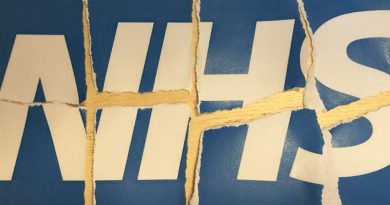My first intimate encounter with a defibrillator
Over the last few years there has been a huge push to put defibrillators in public places. My favourite location so far is in a traditional telephone box in a village centre – at least everyone knows where it is. There is also now a push to get these devices into sports clubs and as soon as my squash club installed one the manager arranged a demonstration on how to use it which was led by the St John’s Ambulance expert. Ironically our trainer was himself called John. These devices really save lives and many people walking around today – perfectly well and happy – wouldn’t still be alive if it were not for a defibrillator near to where they collapsed. One of the most dramatic recent cases was when Fabrice Muamba a Bolton football player collapsed on the pitch in a match as White Hart Lane in London in front of 36,000 spectators. He had suffered a cardiac arrest and was, as his doctor later said, “effectively dead for 78 minutes”. While fans looked on, first in silence and then with encouraging chanting and singing, Fabrice’s heart was kept pumping by first-aid workers using the same techniques that we were about to be taught. Fabrice was taken to the London Chest Hospital in Bethnal Green where he stayed in intensive care before making a full recovery – today if you met him you wouldn’t know that his life virtually ended before he was “brought back”. You might meet him volunteering for the British Heart Foundation’s campaign to encourage better knowledge of what to do in an emergency following a cardiac arrest or similar.

But before you get on to any heart pumping you need to make sure that it’s necessary. Our trainer, John, put to us this challenge – “what do you do if you come into a room and there are three bodies lying on the ground?” Of course we all said you should go and help the nearest one, but John explained the dangers of this. “If there’s one body, you should approach with caution, if there are two bodies approach with extreme caution but if there are three you should simply go to get help”. There could be low lying poisonous gas or some other cause of the dire situation and by kneeling down to try to help you might simply end up adding yourself as a fourth body! Assuming there is only one person on the ground you should approach cautiously and see if they are conscious. You speak to them, speak loudly in their ear to tell them to acknowledge your presence and check if they are breathing. Checking breathing means waiting a full 10 seconds to see if they take a breath, and counting to ten using the “one-thousand-and-one, one-thousand-and-two” method to make sure you don’t count too quickly. Assuming they do not respond and are not breathing and that they are lying face up, you then move their head gently backwards so that their airways are clear. But before you try to revive them or keep their heart pumping you should ask someone to phone for an ambulance and ask that person to come straight back and tell you when they’ve done it so that you know for sure that medical help is on its way. You will then use the heart pumping which you’ve been trained to do using the palm of your hand immediately above the heart on the imaginary “nipple line” and slightly to the left of centre and you begin pumping. I was surprised how hard and fast you have to pump and how exhausting it can be. For this reason it is good to alternate with someone else and after every 40 pumps you can give the patient two large breaths of air in mouth to mouth resuscitation. As our trainer explained, it’s important to make sure the head is back so that the airway is clear and to pinch the nose whilst you do this so that your breath doesn’t go straight out through their nose. You are trying to inflate the chest, but only with two breaths before going back to the heart pumping.
At this point you will use the resuscitation techniques and the defibrillator. This is sometimes called an AED or ‘Automated External Defibrillator’ and it will have clear written instructions with diagrams and usually a recorded verbal system that will tell you exactly what to do with it. First of all you need to know that the pads on the device can only be stuck on bare flesh so you need to get the patient’s top off and if necessary cut it off. Having put the very sticky pads onto two points – one just below the right collar bone and one on the left side just below the ribcage you will follow the recorded instructions. When the device “decides” to give the patient an electric shock it’s important that everyone is clear of their body so that they don’t get a shock too. Hopefully the patient will start breathing again as a result or the medical services will arrive – or both.

We also learnt how to put the patient into the recovery position and what to do in other emergencies such as choking or bleeding. My fellow trainees all said they hoped the situation wouldn’t arise where they needed to use this the defibrillator but if it did they now felt much better prepared. And they also liked the idea that people around them would know what to do if they themselves suffered a cardiac arrest and heart failure. Fabrice was only 24 years old – it can happen to anyone.




